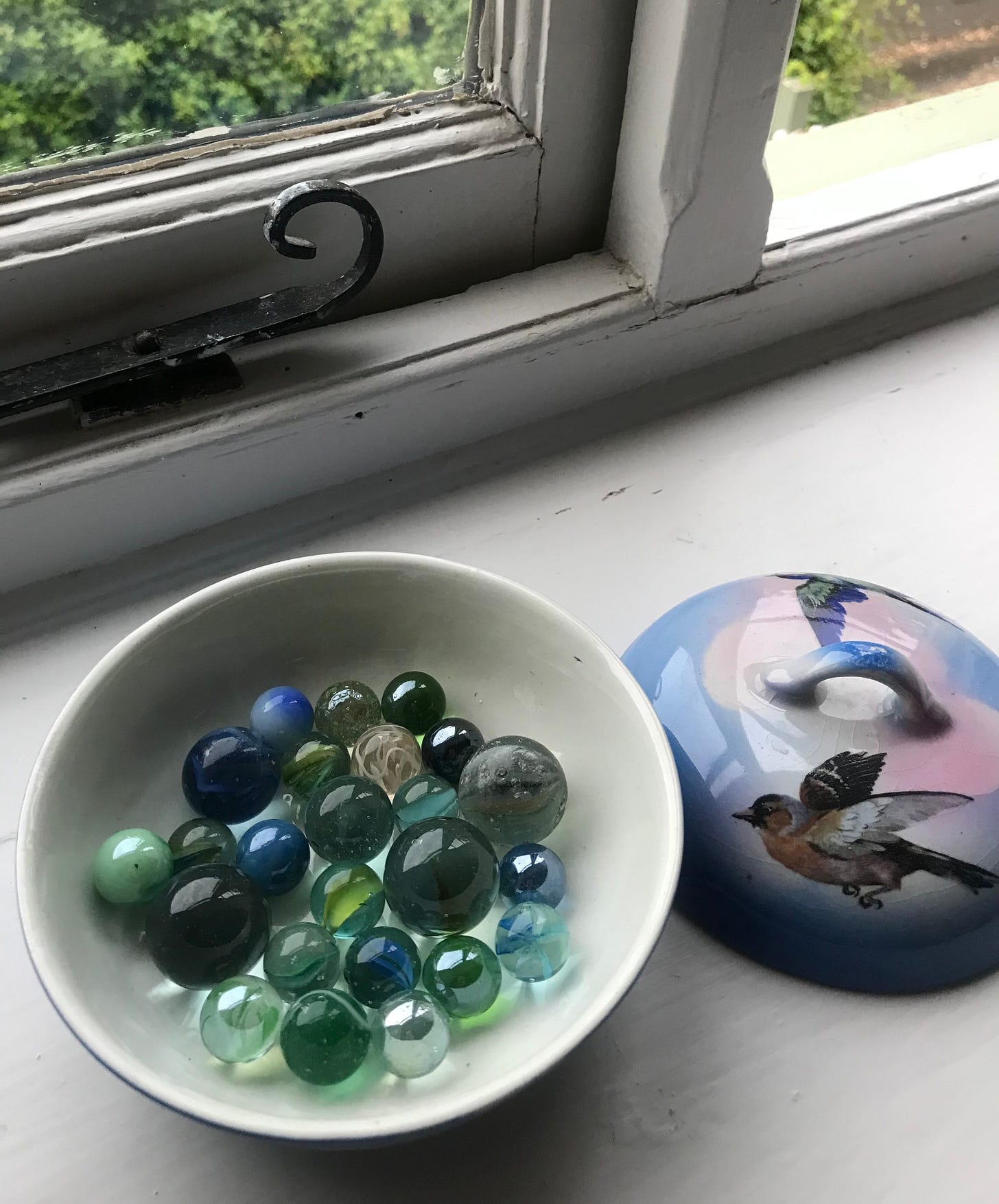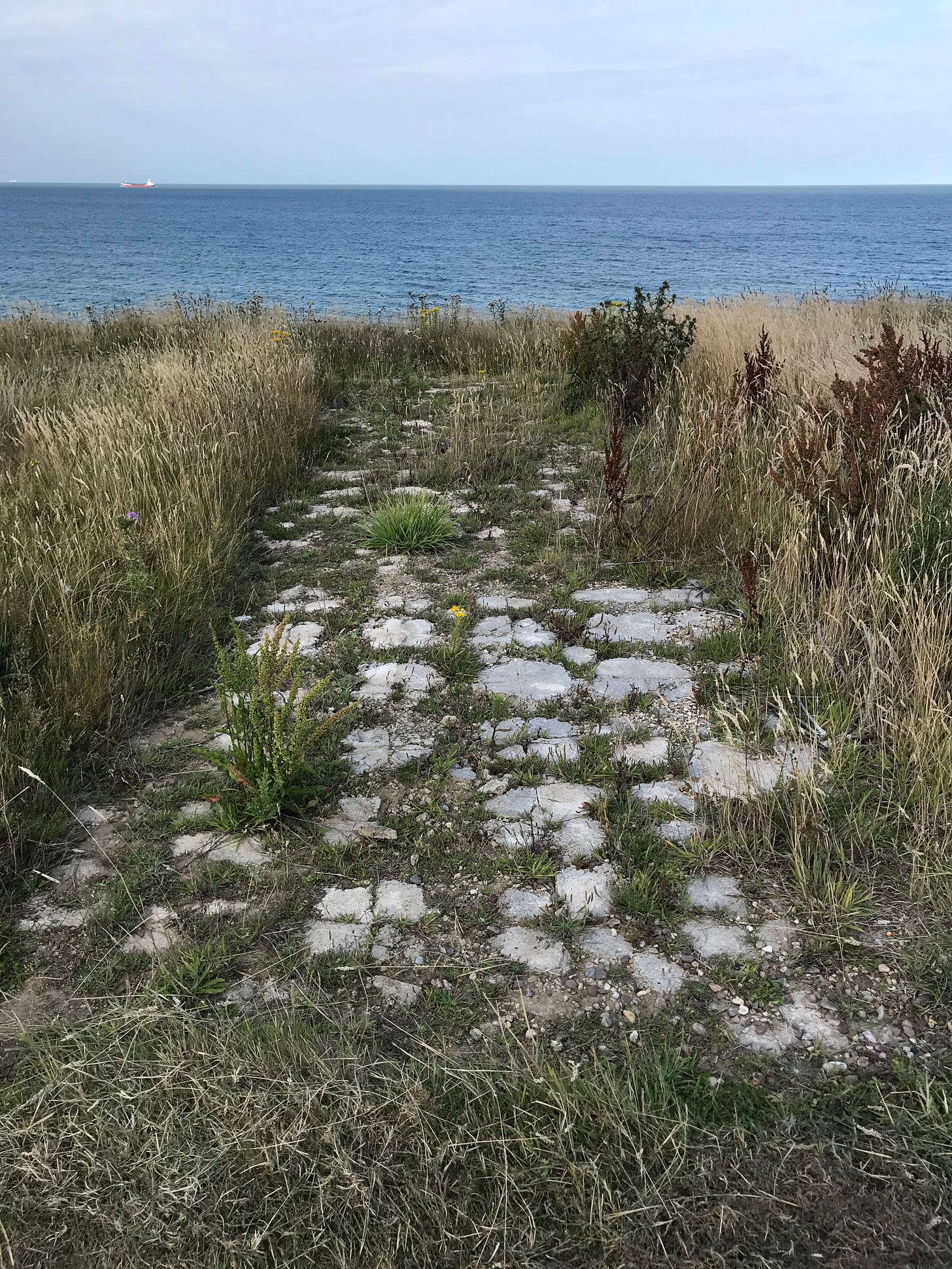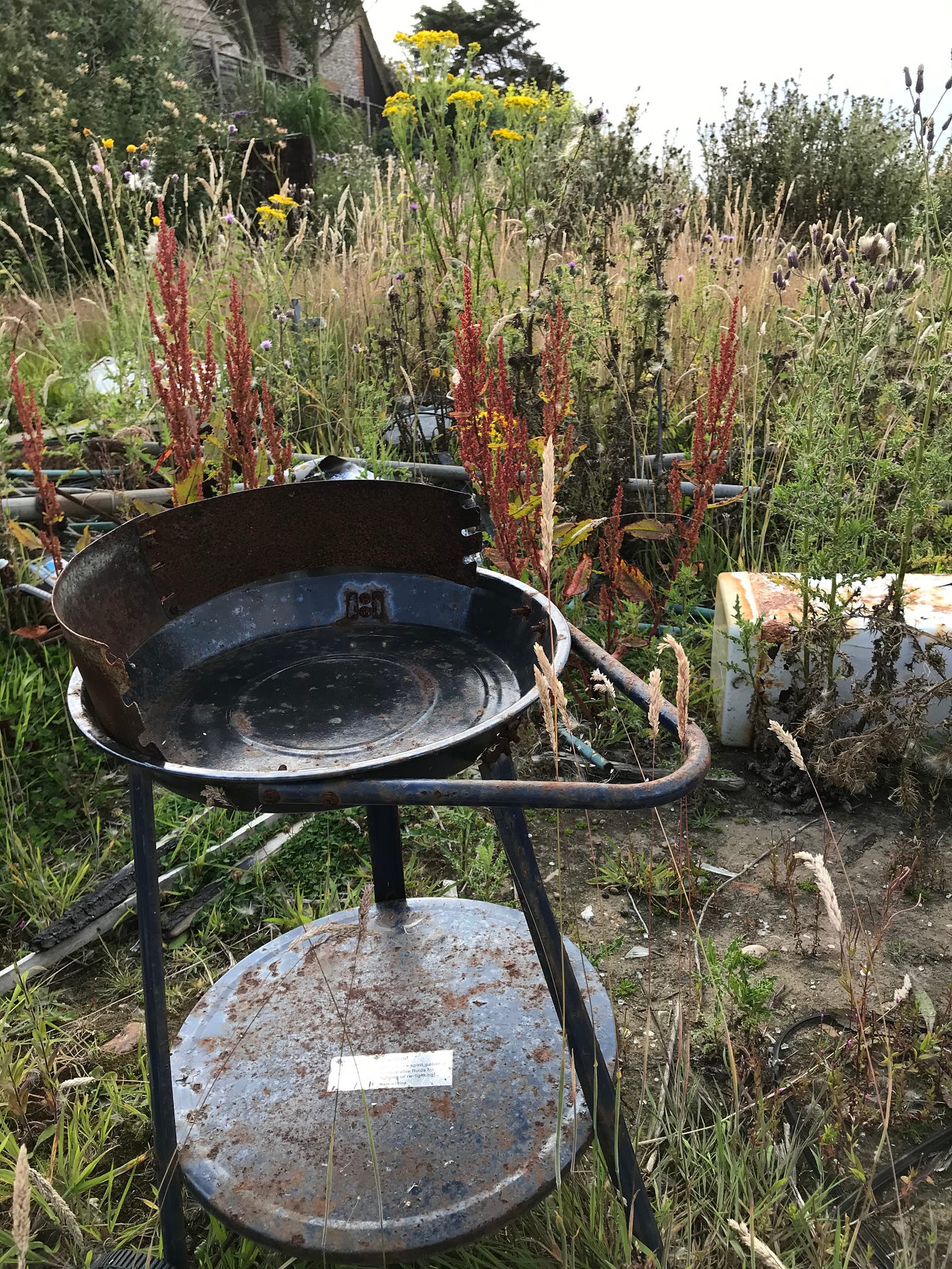The Treasure In It
tangled stalks & sweet smoke
I have seen the sun break through
to illuminate a small field
for a while, and gone my way
and forgotten it. But that was the pearl
of great price, the one field that had
the treasure in it. I realise now
that I must give all I have
to possess it. Life is not hurrying
on to a receding future, nor hankering after
an imagined past. It is the turning
aside like Moses to the miracle
of the lit bush, to a brightness
that seemed as transitory as your youth
once, but is the eternity that awaits you.
R S Thomas, The Bright Field
Happy full moon in Capricorn!
July’s full moon orbits closer to Earth than many of the other moons this year, making it one of the four supermoons of 2023. At its nearest point, the moon will be 224,895.4 miles (361,934 km) from Earth, which means that August’s Blue Moon will be the only supermoon that is closer to our planet this year.
While a supermoon is technically bigger and brighter than a full moon usually is, it actually only appears about 7% larger. That difference can be almost imperceptible to the human eye, depending on other conditions. But the fact remains that the moon is closer to us, and who knows how that extra lunar energy affects us?
The July full moon is usually known as the Buck Moon. Male deer begin to regrow their shed antlers in July, hence this Native American name. Some alternative Native American names are Berry Moon (Anishinaabe), Feather Moulting Moon (Cree), Halfway Summer Moon (Anishinaabe), Month of the Ripe Corn Moon (Cherokee), Moon When the Chokecherries are Ripe (Dakota), Raspberry Moon (Algonquin, Ojibwe), and Salmon Moon (Tlingit).
Sometimes the July moon is called the Thunder Moon, because of the summer storms in this month. (In fact, we had one this very afternoon!) Other names include Hay Moon, Wyrt (herb) Moon and Mead Moon.
I like Hay Moon and might also go for a name of my own, Mugwort Moon. How about you?
The Dish of Marbles
My bedroom window sill. In the quiet of the dark you can hear the low roar of the sea.
It had been ages since I’d taken coffee to the beach but on a whim I put a flask in my bag and set off. There was something else I’d been wanting to do too. A couple of days beforehand while sorting yet more boxes in what I call the Yoga Room (ironic since it’s proved to be too tiny to actually do any yoga in!) I’d come across some beautiful old sea coloured marbles. They have a simple story, at least since they came into my hands. Who knows what stories they could tell of their past lives?
In days past, my husband and I loved to visit The Funky Mackerel, a cool little retro cafe and ‘rummage room’ set right into the cliff in a North Norfolk seaside resort. It’s gone now, something that would make my beloved sad if he knew.
One day, a tempting jar full of marbles of every hue sparkled in the sunlight reflected off the sea and I knew I wanted to take some home to keep the seashore close at hand. They were priced at a few pence per marble so I picked out those that reminded me of the glint of the waves and the dark of rock pools to slip into my pocket.
They had been waiting ... and three summers ago I suddenly knew they needed to be brought into this new place by the sea and this new life by being immersed in it fully. So I put them into a sky coloured dish, and washed them in the surf at my new sea’s edge. Then I set them above the tide and let the waters wash around them. Back home at the cottage, they live on the bedroom window sill. At night when all is quiet you can hear the gentle roar of the sea from there.
Little sea-droplets.
I put my head in the bag of leaves
and breathed green. Coarse sour juiced crushed
smell of wet summers, that sharp male taste;
foliate-faced I sucked green with each breath,
spaced out on oak. The fine drenching rain
felt seasidey. We walked the gleaming lane
that ribbons from hill to hill, slowly, dodging
odd Sunday cars, to our knees in tangled stalks,
flowering grasses, red clover heads weighed down
with so much wet, the ditches murmuring.
Wine from oak leaves is tawny, tastes dark
and woods, midsummer evening fires, the sweet
smoke of peat. It is strong, climbs down deep
and blazes. It comes from the young growth;
the tender pink-flushed clusters of new leaf
offer themselves at a touch, break free
in showers of droplets, stalked green and sapped
like frankincense. You pour boiling water
on the stripped leaves: they smell of fresh tea.
The brew is bitter and brown; it could cure leather.
I sipped at last year’s wine; thought, from now on
the nights draw in. The season’s prime lay
stewed in a bin, filling our house with summer.
(I’m autumnal, best in receding light
in the dark half of the year.) Next day
I strained the stuff, added yeast and sweetness,
set the warm juice to work. Those clear green leaves
are bloodless now, bleached out: I have
their essence bottled up, breathed in, elixir of all
oaks in me, as the sun inches south.
Hilary Llewellyn-Williams, Oak/Duir from The Tree Calendar
A Midsummer Night’s Dream
If you’ve been following Bracken & Wrack for a while, you’ll know that I’m fascinated by the lasting effects of the 11 Lost Days of 1752. This change to the calendar - an attempt to calibrate astronomical with calendrical time as they constantly draw apart - has skewed many an old saying, proverb or snippet of folklore. Time continues to slip and we are now 13 days adrift. This makes Old Midsummer Eve - the magical setting for Shakespeare’s A Midsummer Night’s Dream - 6 July by today’s reckoning. I love celebrating Old St John’s Eve and Old St John’s Day, which feel like secret and special festivals and bring a spark of ritual to July which, if you don’t follow the old calendar, is quite a barren month festively speaking.
I looked through my old YouTube videos and while I didn’t find one specifically about Old Midsummer, I did discover that last year I published a video on this exact date, 3 July. So I’m including it for a further flavour of the season. By the way, last year the thistles may have been six feet tall but this year they’re probably nine feet! I have lost all control but on the plus side it’s fascinating to watch my wild guests arriving and thriving.
3 July 2022.
The Old Caravan Site
I probably discovered the abandoned caravan site by accident, or maybe a friend told me about it. When I first walked along the wild cliff top before crossing the neat car park and scrambling down to the beach, some of the burned-out remnants still stood there. Each rectangular standing was visible; some even had stepping stones to a long-gone door or beach cobbles arranged to outline a ghostly garden.
Dotted between the swathes of plantain, yarrow and wild grasses that were already making their takeover bid, were tossed heaps of debris. Broken paving slabs, drainpipes, breeze blocks, twisted bits of caravan chassis.
Sticking out, or balanced on top, were poignant reminders of the lives of the people who had loved their cliff top caravans. Scraps of Lino and tile, a doormat, a toilet bowl, a rusted barbecue.
Then there was the sole survivor. During my early visits to the cliff top a single caravan remained, the one furthest from the gate, derelict but not yet broken. It broke my own heart to look at it. I can hardly imagine how you would feel if you’d known the site - sea sparkling below, gulls wheeling above - in its heyday.
In time all the debris was cleared away and the buttercups and ragwort were free to roam where they would. But beautiful as the wildflowers are, they are not alone in tasting the high salty air of the cliff top. Here and there, patches of colour jump out and reveal that not all of the site’s inhabitants left when the last caravan was cleared away. Against the odds, cultivated plants mark the positions of once-loved gardens; tenacious floral tributes to a fragile paradise.
I have seen the green spears and fiery flowers of crocosmia, cottage-orange marigolds and dusky-bruised hydrangeas, their papery bracts set rustling by the east wind.
One autumn evening in the half-light my attention was caught by a distant splash of deep pink, a strange almost otherworldly hue. As I drew closer to the boundary hedge my heart jumped as I realised it was a rose, a cultivated rose unlike any I’d seen before. The bush itself was struggling, straggling, salt-burned and leggy but those scattered blooms had heeded a primeval call to spiral open, raising perfect petal-chalices in a toast to the glory days when the rose was lovingly planted and tended.
I felt the rose needed a name so I call it the Gypsy Rose. I say ‘call’ rather than ‘called’ because - closer to the edge each year and holding on by a thread - the Gypsy Rose blooms there still.
The Gypsy Rose.
Two years ago: 4 July 2021
Mugwort, St John’s Wort, Yarrow. These were the three wild herbs I gathered on St John’s Eve. They’ve been hanging from the kitchen beam since Midsummer’s Day. I’d had the idea of twisting them into a couple of smoulder sticks to send out their sweet smoke on Old Midsummer’s Eve which falls the day after tomorrow.
This is the exact moment that our ancestors would have experienced all the traditional midsummer rites and fires. It’s interesting to see how the axis is already turning since the Solstice, with sycamore keys becoming more adolescent by the day, foxglove seedheads waving their party streamers and the tiniest of baby conker-cases littering the lane.
Perhaps I should have gone back to the instructions for making smoulder sticks that I’m sure I once read somewhere. The part I definitely remembered was that it’s a good idea to hang the herbs up for a few days to partially dry them. Too damp, and there’s a risk that the inside will go mouldy once tightly bound. Too dry, and the leaves and stems will crack and crumble. Luckily I caught my two little bundles while they were still pliable, which felt like a good beginning.
The thing I should perhaps have researched again was how to loop and tie the bundles to make the neat cylinders with stem handles I can see in my mind’s eye. At least I’d retained the advice to use several separate strands of thread for the tying, so that if one of them burns through, the herbs will still be held (I used linen thread).
As for the result, well, they’re not pretty but they lift my spirits and hopefully they will still work! I’ll let you know after Old Midsummer has passed for another year.
And meanwhile, the kitchen smells of sun-warmed hedgerows.
PS: Old Midsummer Eve falls on 6 July, 13 days after today’s St John’s Eve. The ‘Lost Days’ of 1752 mean that the gap is constantly widening.
PPS: Two years later and I am still burning sticks that I made at that time. It’s better to make fresh of course, but they are still amazingly potent.
Hanging to dry out on the kitchen beam, 4 July 2021.
The work of a Sea Witch
It’s said that Cornish witches once sat on Boscastle harbour, breathing the wind into a length of cord and then tying three knots in it. This they would sell to any passing sailor who had the coin to pay the price for this most useful Arte. Whenever he had need of a fair wind, the mariner had only to untie one of the knots and unleash the breeze.
Although undocumented as far as I know, I imagine the same charm would be in high demand here in the equally maritime Norfolk. Around the coast to the east of The Old Shop lies Great Yarmouth, once a great fishing port with its own distinctive folklore and traditions. Among its former inhabitants were the enigmatic Kitty Witches, who are immortalised in the name of one of Yarmouth’s infamous narrow lanes - the Rows.
I’ve heard whispers that Kitty Witches were wild women of ill repute who terrorised the town, playing tricks to obtain money for drink. It’s not impossible, though, that they were feared because they lived outside the norms of conventional society. Why should they not have had skills in planet-reading, tea leaves, charm-making?
And, just maybe, some of them might have sat on Great Yarmouth’s harbour wall, watching the herring boats come and go as they brought in their hauls of the Silver Darlings. Perhaps even today out of the corner of your eye you might catch a glimpse of them plying their trade as they gather wishes into their knotted ropes.
Fishing boat on Cromer beach, Norfolk.
The Sea Witch’s flapjacks
Nothing better than coffee by the sea! I was glad that I popped in a flapjack too, and as they’re so good as portable summer food I thought you might like the recipe. I’ve shared it before on Instagram but it definitely bears repeating at this time of year.
I’m not sure what kind of snacks the sea witches of old would have had with them for sustenance as they waited for willing customers, but had they had access to the ingredients these would surely be the very thing. They are vegan and gluten free, not too sweet and I think the best version I’ve tried. But tell me what you think if you make them.
Oven 190 degrees.
360g porridge or jumbo oats.
2 ripe bananas.
6 tablespoons peanut butter.
6 tablespoons maple syrup.
4 tablespoons coconut oil.
Handful of raisins.
Mash the bananas with a fork and heat gently in a pan with the maple syrup, coconut oil and peanut butter.
Pour onto the oats and raisins, stir well to mix. Spoon into a lined or greased tin and bake for 15 to 20 minutes until browned.
Leave to cool completely before cutting into squares.
Bacton beach, Norfolk.
Until next time.
With love, Imogen x










Mead moon sounds deliciously unproductive for a hot summer day. I love mugwort and mugwort moon! This morning I picked the wild thimble berries while greeting the garden and sipping coffee. Very peaceful and soft. Your photos of the beach are marvellous. Thank you for lovely stories and poems.
The Lost Days reminds me of the topic of a 9 day-week calendar that I have been reading about, where the math works and is in alignment with the Universes 3-6-9 system for- well most everything.
I’m curious about the abandoned caravans- so people were living there full-time? Was it legal to do so? Nowadays parking anywhere is problematic.
Will try this much healthier version of flapjacks, when it’s cool enough to turn the oven on.
I would happy to call this the Raspberry Moon ( my favourite berry) but alas, the raspberries are not ripe yet. The elderflowers are out though; I can see them from where I sit and that reminds me- the other morning two intrepid deer were on the grass behind the house, checking out the sheep in their paddocks and leisurely walking at the edge of the pond before they headed back into the woods. I’ve never seen them so close before. It was magical. So maybe Buck Moon or Elderflower Moon for me 🌕.